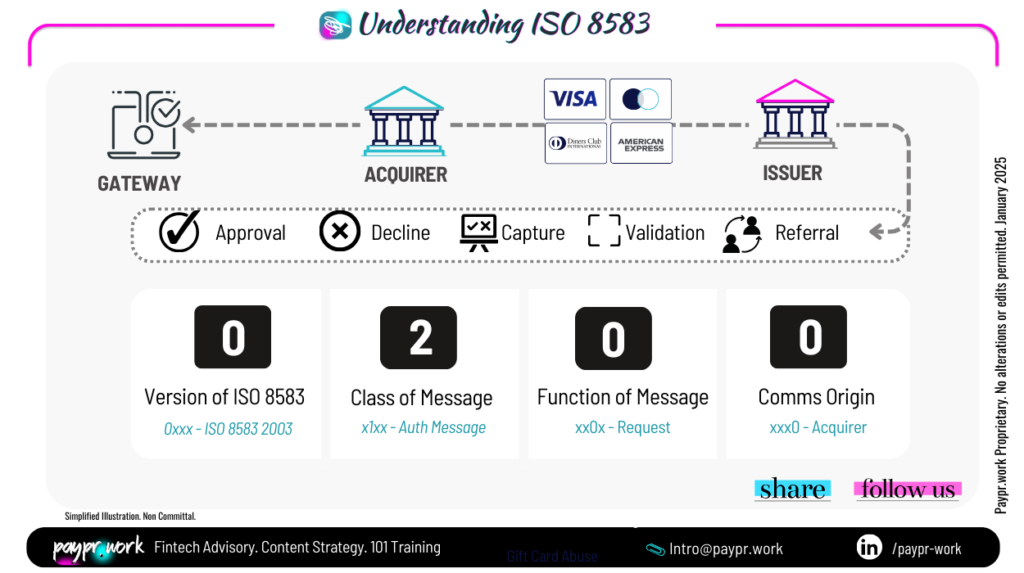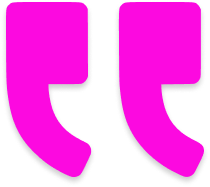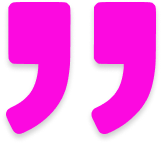
The story of payment processing has always been one of constant evolution. In its earliest days, authorizations were handled manually. Yes, merchants had to call the cardholder’s bank or a switching center to get approval for a transaction. As credit cards became mainstream and transaction volumes surged, this approach quickly became unsustainable.
To address this, card networks built centralized electronic systems that linked merchants, acquiring centers, and issuing banks through a central switch. These systems revolutionized payments and have been in play for the better part of 50 years. While the technology behind payment messaging has advanced significantly, its foundations remain rooted in systems like ISO 8583—a messaging standard developed to streamline transaction exchanges.
For decades, ISO 8583 has served as the backbone of card-based electronic payments. It defines a structured message format and communication flow, enabling systems like acquirers, issuers, and card schemes to exchange transaction data seamlessly. Whether it’s a purchase, refund, withdrawal, or balance inquiry, ISO 8583 facilitates the exchange of vital information, including transaction type, amount, card details, and merchant specifics.
A typical transaction under ISO 8583 involves multiple systems exchanging requests and responses, such as authorizations or declines. The protocol ensures that these exchanges follow standard formats for integration, interoperability, and accuracy, using up to 63 or even 127 data fields processed linearly.

While ISO 8583 remains crucial for card transactions, the payments industry is transitioning to ISO 20022 to address the demands of a digital-first world. Unlike ISO 8583, which is specific to card-based payments, ISO 20022 is a more general messaging standard used across various financial transactions. It introduces richer, more flexible data structures, enabling faster, more secure, and transparent exchanges.
Modern payment systems, driven by real-time transactions and API-based messaging, require these advanced formats to deliver seamless integration and enhanced insights. Much like how the original authorisations system addressed the limitations of manual authorizations, ISO 20022 is designed to meet the challenges of today’s global payments landscape.
This evolution in payment language is about more than just technological upgrades—it’s about preparing the ecosystem for a future where payment systems are interconnected, real-time, and data-rich. As standards like ISO 20022 take center stage, payments will become faster, smarter, and more secure, paving the way for innovation and improved customer experiences.
As the payments industry evolves, so does its language. The shift from ISO 8583 to ISO 20022 marks a pivotal moment, transforming how systems communicate and paving the way for faster, more dynamic, and future-ready payments.
Paypr.work blends payment knowledge and custom research into a simplified yet insightful narration. Our narratives feature visually engaging designs that break down both fundamental and complex payment jargons into bite-sized, repetitive micro-concepts to promote better comprehension and retention.
Sign up for a Paypr.work Premium Membership to exclusively access all of our payment resources, including our full articles, industry insights, ecosystem maps, reports, videos, and our unique library of bespoke infographics.
Don’t miss out— sign up to learn payments in a captivating way!



You have provided so much light and knowledge in a fascinating world. You definitely bring the fun to Fintech like no one else and actually know what you are talking about! Thanks goodness for you😁!

Vice President Global Product Expansion, Shift4
Impressive, congratulations Sandra and Team Paypr.work. The detail in each of your 100+ infographics is outstanding and showcases your expertise well… Continued success for this remarkable work!

LinkedIn Strategist | Digital Transformation Leader

Host of Heads Talk
Your diagrams have the ability to explain the most complicated of topics in way that can be understood by anyone. Not many people have the ability to create self-explanatory visuals, so keep doing your magic 🔥🔥🔥!

CEO & Co Founder of CLOWD9
Your content is so informative, accurate, and fabulously presented in infographics that always attract great attention. Your visuals naturally spark strong engagement regardless of the LinkedIn algorithms !

B2B Marketing, Marqeta
The depth of Paypr.work knowledge and skill sets are truly impressive. Their ability to combine deep industry expertise with well-depicted visual is pretty unique. I strongly recommend Sandra and Paypr.work !

Director EMEA Payment Solutions, Marriott International
👏👏 👏👏 👏👏 I always love your content and in fact, I am so happy for all of us in the industry… we’re lucky to have you sharing your payment wisdom with us 🤓… thank you! Keep up the great work.

Strategic Accounts Director, Truelayer | Payments and Fintech Geek
Merci Sandra pour ta facilité à vulgariser le paiement via de simples dessins, qui me surprendront toujours. Pour ceux qui ne connaissent pas son travail, je vous invite à suivre Paypr.work [ˈpeɪpəwəːk]!

Product Manager Paiement, Maisons du Monde
Your enthusiasm and ability to simplify Payments is so refreshing and literally shines through! Sandra and her team research, write content and create some stunning infographics for the payments industry….

Chief Operations Officer, Clowd9
Keep up the good work and know that your hard work and dedication is so inspiring for all of us. You are truly doing an incredible job and your consistent efforts don’t go unnoticed.

Chief Community Officer, NORBr | Redefining Payment Infrastructure | Linkedin Top Voice
Your posts are a masterclass in how payments have evolved from a basic utility to a strategic asset. Your ability to simplify this complexity and provide strategic direction along with implementation support is so invaluable. The clarity and depth you provide are exactly what this fast-evolving industry needs.

Chief Commercial and Operations Officer, Soffid
The mechanics of all things payment are a black box for most industry stakeholders. With the help of their well researched and designed infographics, Sandra and her team at Papr.work demystify complex flows and create awareness about the factors that play a role in the end to end processes.

Paul van Alfen | Managing Director Managing, Up in the Air - Travel Payment Consultancy
Your Paypr.work subscription gets you full access to all Paypr.work content in 1 place including: our weekly new payments articles, our infographic blog, exclusive discounts on all the services that Paypr.work has to offer and the opportunity to collaborate on free infographic to promote your knowledge/value proposition and more. The content is for personal use and cannot be copied, reproduced, redistributed, altered, modified, shared publicly or with third-party nor can derivatives of the work be created. The user may share content that is available through the free blog access subject to crediting Paypr.work with the attributions.